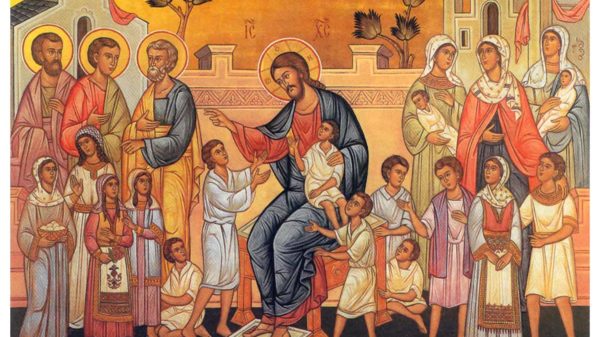by Steen Jensen
AKA SCA Sir Sten Halverson, Baron
1993
During many years in the Society, I could not define chivalry, other than to wave my arms about and say such things as, “it’s what we’re striving for,” or “it’s what its all about.” The term seemed an elusive catch-all for something more visceral than intellectual. Then I began to think, and talk, and have come up with the following: Chivalry is a romantic ethic. By romantic, I mean an ethic that is heavy on the ideal, and light on the practical, and is so doomed to failure in the real world. Arthur falls; Roland dies; Don Quixote is no more than a glamorous fool.
The first problem in discussing chivalry within the Society (ed. the SCA) is that it is a word with many distinct meanings. We must weed out the less interesting before we can even begin a discussion of the use that lies at the heart of this game that we play. First, these are the authentic medieval uses, which range from the early, “dem boys on da horses,” through, “the behavior of the boys on the horses,” to the late period, “the idealized conduct of the knights.” With due courtesy to proponents of strict authenticity I would argue that none of these are at the core of the use of the word within the Society.
An important thing to notice about chivalry, as can be seen from its progress through the Middle Ages, is that the particulars of its meaning evolve. Chivalry has never stood still; that is the great reason that it is so elusive, and continues to have such power. For it to have meaning for us in the Society, and not merely be a dusty historical oddity, it must adapt to our needs. In all Medieval contexts, chivalry is tied to martial activities, but in our modern use, I would find it difficult to face a non-fighting member of the Society and tell them that they can not be a chivalrous person. The word, in so far as it has meaning for us today, has shed its martial past.
Even limited ot its modern use, the word splinters into at least three distinct directions. The first is an echo of its original use–“dem boys and girls with da white belts and baldrics.” The second use is in reference to specific acts–chivalrous deeds on and off the field. While such actions are informed by a more abstract notion of chivalry, discussion around them most often bogs down on the specifics of the actions 1, and whether or not a deed should or should not, when and when not, be counted as chivalric. I am happiest to grant that a great many actions can be motivated by chivalry, then move on to discuss what it is that motivates. And here, I believe, we find that chivalry drives the Society.
This last sense of chivalry is not divorced from all the others I have mentioned. It arises out of the medieval tradition and is expressed through the deeds of our exemplars, most notably the members of our own Chivalry. For my particulars, I look to the virtues of the medieval knight, fully aware that, even among the writers of the time, these virtues were a point of contention. I would first choose courtesy–the equal and polite regard for all in the Society from crowned heads to the greenest newcomer who is wearing a bed-sheet T-tunic, along with a due reverence to earned and bestowed honors. Generosity is the second virtue, manifest in the Society mainly in time and energy, but including a willingness to forgive weakness in others, and to grant trust. The third virtue is loyalty, to your Crown and to your peers, to your household or group, to your consort, and to yourself in your own belief in the Society and in your own honor. The last of the core virtues is consistency, a virtue I derive from the medieval virtue of Franchise. Franchise revolves around the bearing of a knight, that he should never forget himself, and should always carry himself as befits his station. For us (and to some degree them, I believe), it becomes a matter of consistency and courage. These are roles that we play, and try as we might, we will never be as consistent as someone born to them. But we must try, and when we fail, as we will, we must find the courage to make amends as best we can and then to try harder. That is the virtue of consistency.
Aside from these core virtues of chivalry, we have variation built along the lines of a social order. We have three peerages, and each has their own particular virtue and expression. For the Chivalry (myself included), we have the old virtue of prowess, expressed through the need to defend. We have our wars, we have the odd tug to be nosey whenever we see a sign of trouble, and I believe we tend to be the most passionate and the least thoughtful in defense of the whole, odd game we play. The virtue of the Order of the Pelican is service expressed in sacrifice. This virtue and expression may seem to be an extension of generosity, but its depth and passion astounds my lazy spirit, and causes me to see it as a distinct virtue. The Order of the Laurel holds the virtue of magnificence, manifest in adornment. This may seem an odd, materialistic virtue, but the Society would only be a shadow of itself if we did not strive to look the part, and where possible to be the part (through authenticity). Though each order of peerage has its own particular virtue, each necessarily shares a little in that of the others, while all share equally in the core. If you will, if chivalry is at the heart of the Society, then the Chivalry defend it, the Pelicans sacrifice for it, and the Laurels adorn it. Take any away, or even fail to appreciate the contribution of one, and you cause our little tripod to fall.
I trust that it won’t. In the real world, such a system that it is built on tust, and courtesy, and on the frailty of human effort will fall to cynicism, practicality, and self-interest, even as it fires the imagination of its destroyers. All that would remain would be tales that would renew themselves generation after generation as people grasp after the ideals only to fail again and again. We in the Society have not these problems. We can leave the baggage of reality when we go off on our weekends; we can live the romance of our ethic without the damning weight of the full range of human behavior.
Chivalry probably had another name before this, stretching back into the past as a title for unlivably high ideals. During the Middle Ages, a particularly appealing group of virtues coaslesced around the new term (I suspect because the reality was correspondingly harsh and brutal), and chivalry, changing with each romantic revival, has colored Western culture ever since. The Society is just the current outbreak.
Chivalry is a romantic ethic, doomed to failure. Arthur fails; Don Quixote was a fool. But I come away from good events with a heart full of courtesy and generosity, with a strengthened sense of my own honor, and with a little more courage and persistence in the face of a less than ideal world. That is the reason that during the Middle Ages warriors and rulers at their leisure turned to dreams. That is the reason we today are drawn to these virtues of chivalry. We may never live out a romantic ethic, but it is a food as nourishing as any at the table, and a wealth as dear as any coin of the time.












